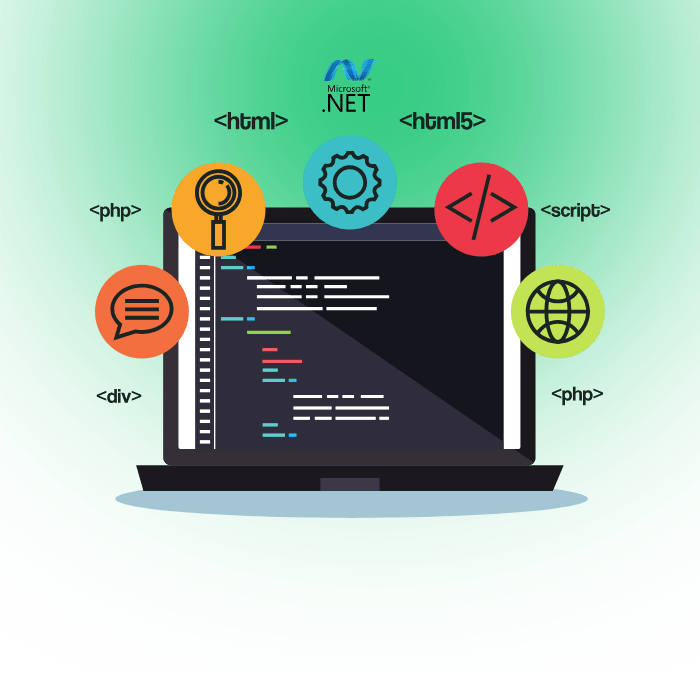What is JavaScript Framework?
JavaScript framework is a prebuilt structure that defines how your app renders UI, handles state, routes pages, and talks to APIs. Think of it as an opinionated toolkit that sets patterns, so teams stop re-inventing plumbing and focus on product behavior. Many teams hire based on framework fluency, which affects delivery speed and onboarding.
Framework normally bundles a rendering model, component system, routing, and build setup. Examples include Angular’s batteries-included approach and Svelte’s compiler model. MDN’s primer covers why frameworks exist and when to use them for modern web work.
What Are JavaScript Libraries?
JavaScript library is a set of utilities or UI pieces you call inside your own structure. Libraries don’t dictate your routing or data layer. jQuery, Lodash, or charting packages like Chart.js are classic examples. MDN distinguishes “frameworks vs libraries” as control-flow ownership: frameworks call your code, while you call libraries.
Key Features of JavaScript Framework
Component-based Architecture
Component is small UI testable parts with explicit inputs and outputs. This modular shape improves reuse and allows teams to scale screens without tangling business logic. In Vue, <script setup> simplifies Composition API and reduces boilerplate inside Single-File Components, a real quality of life boost.
Data Binding
Data binding keeps UI in sync with state. One-way binding reduces surprises by pushing changes top-down. Two-way binding can speed up forms at small scale. Angular offers both patterns, while React encourages unidirectional data flow in most cases. Pick consistency, not fashion, to avoid tricky debugging later.
Routing
Routing maps URLs to components. Framework routers handle nested layouts, loaders, and code-splitting. Next.js leans on filesystem routing with server-first data hooks, while Ember and Angular offer mature, explicit routers that shine in large apps. Good routing avoids waterfalls and keeps navigation snappy.
State Management
State spans UI state, server cache, and session data. Use framework primitives first, then reach for tools like Redux Toolkit, Pinia, or TanStack Query. Centralizing async cache separately from UI state prevents over-renders and makes invalidation rules clear.
Virtual DOM
Virtual DOM is a diffing strategy used by React and others to update the real DOM efficiently. Not every framework uses it. Solid tracks fine-grained signals, Svelte compiles to minimal DOM ops at build time, and Qwik resumes state without hydration. The right approach depends on your render frequency and interactivity needs.
Types of JavaScript Frameworks For Website Development
1. Full-Featured Frameworks
Full-featured frameworks include routing, state patterns, testing guidance, CLI scaffolding, and strong docs. Angular and Ember live here, where long-lived apps benefit from consistency and shared conventions across big teams.
2. Micro-Frameworks
Micro-frameworks keep a tiny runtime and let you compose only what you need. Solid and Svelte focus on lean rendering paths. Qwik aims for instant interaction by skipping hydration in favor of resumability, which can cut initial JavaScript fetches sharply.
3. Component Libraries
Component libraries provide UI building blocks rather than a full app runtime. React by itself is a library, often paired with a router and data tools to feel like a framework. Vue can act similarly when you curate your stack around it.
Top 10 JavaScript Frameworks For Web Development
1. React.js
What is React Js?
React is a component library for declarative UI that popularized one-way data flow and the virtual DOM. On its own it’s unopinionated about routing or data-fetching; most teams add Next.js, TanStack Query, or Redux Toolkit. Its strength is the ecosystem and the mental model of predictable state updates.
React.Js Features
2. Angular
What is Angular?
Angular is a full-stack, TypeScript-first framework with a CLI, router, forms, and testing patterns baked in. Version 18 introduced experimental zoneless change detection, reducing reliance on zone.js and improving debuggability for large apps that need strict control.
Angular Features
3. Vue.js
What is Vue.Js?
Vue offers a gentle learning curve with reactive components and a template syntax that reads like HTML. Vue 3’s Composition API improves logic reuse, and <script setup> trims boilerplate, which has helped teams reduce file churn and mistakes in busy repos.
Vue.Js Features
4. Svelte
What is Svelte?
Svelte compiles components at build time into minimal DOM operations. Svelte 5 stabilized with “runes,” reshaping reactivity while cutting runtime heft, which leads to smaller bundles and quicker interactions on mid-range devices. SvelteKit 2 rounded out routing and deployment paths.
Svelte Features
5. Next.js
What is Next.js?
Next.js adds server-first rendering, routing, and data-fetching on top of React. It supports edge rendering, API routes, and file-system layouts. The App Router and Server Actions improved data mutation flows, while Turbopack and Partial Prerendering pushed build and UX speed further. Recent 15.x updates keep tightening DX.
Next.Js Features
6. SolidJS
What is SolidJS?
Solid uses fine-grained reactivity rather than a virtual DOM, tracking exactly which computations depend on which signals. That design cuts wasted work during updates and often leads to very strong interactive performance at scale. The mental model stays close to JavaScript and JSX.
SolidJS Features
7. Qwik
What is Qwik?
Qwik’s big idea is “resumability.” Instead of hydrating a full app on the client, Qwik serializes server state and resumes it lazily on user interaction. That can yield instant start for content-heavy sites and complex dashboards, even under tough network conditions.
Qwik Features
8. Ember.js
What is Ember.js?
Ember favors convention, stability, and backward compatibility. The Octane edition modernized components with tracked properties and Glimmer rendering, which simplified reactivity and reduced boilerplate in enterprise codebases that live for many years.
Ember.js Features
9. Backbone.js
Backbone is a light library for models, collections, and views with events. It’s not a full modern framework, yet legacy apps still run with it, and its ideas around evented models influenced modern stacks. Use it mainly for maintenance or slim enhancements on older code.
Backbone.js Features
10. Express.js
Express is the de-facto Node.js web framework for building APIs and server-rendered pages. Version 5 landed in 2025 with routing upgrades and security fixes, while keeping the minimalist core teams expect for microservices and gateways.
Express.js Features
Which Jsavascript framework offers the best performance in 2025
Performance depends on the kind of work your UI does. Synthetic benchmarks that stress DOM ops show Solid, Svelte, and some Qwik samples near the top across create, update, and replace rows, with small memory footprints. React and Vue remain competitive in real apps where caching, streaming, and SSR dominate the user-perceived speed.
| Scenario | Likely Fit | Why it helps |
|---|---|---|
| Heavy interactive tables | Solid or Svelte | Fine-grained updates reduce DOM churn |
| Content-first, instant TTI | Qwik or Next+Partial Prerendering | Resume or stream HTML early |
| Complex enterprise forms | Angular | Uniform patterns, forms, i18n |
| Mixed SSR + API edge routes | Next.js | Mature platform tooling |
Benchmarks are great smoke tests, but your network path, server render strategy, and cache invalidation usually make a bigger dent than raw diff speed. Tune data fetching before swapping frameworks.
Choosing The Right Javascript Framework (Conclusion)
If your org needs strong guardrails and durable conventions, Angular or Ember reduce decision fatigue.
For React teams who want server-first DX and platform features, Next.js is a pragmatic path. Svelte is best for building interactive dashboards on mid-tier devices. For heavy content sites where instant paint matters, Qwik’s resumability or streaming in Next keeps first input quick under pressure.
Give us your desired javascript framework choice, project scope, risk notes, and schedule. We’ll craft a lean role mix and a two-sprint plan that avoids the usual roadblocks.
FAQs
Which JavaScript frameworks are best for large-scale enterprise projects?
Chose Angular for large enterprise apps that need strong patterns and long support windows.
Ember also fits teams who value conventions and upgrade stability.
What is the best JavaScript framework for beginners?
Choose Vue if you’re new and want clear templates plus gradual complexity.
React is perfect when your organization already standardizes on it.
Is Javascript and Java are Same?
No. JavaScript and Java are different languages with different runtimes. JavaScript runs in browsers and Node.js, while Java runs on the JVM.
Which JS framework should I choose for building real-time applications?
Use React or Vue on the client with a Node.js backend using Express and WebSockets. Solid and Svelte also work well for fast UI updates.






